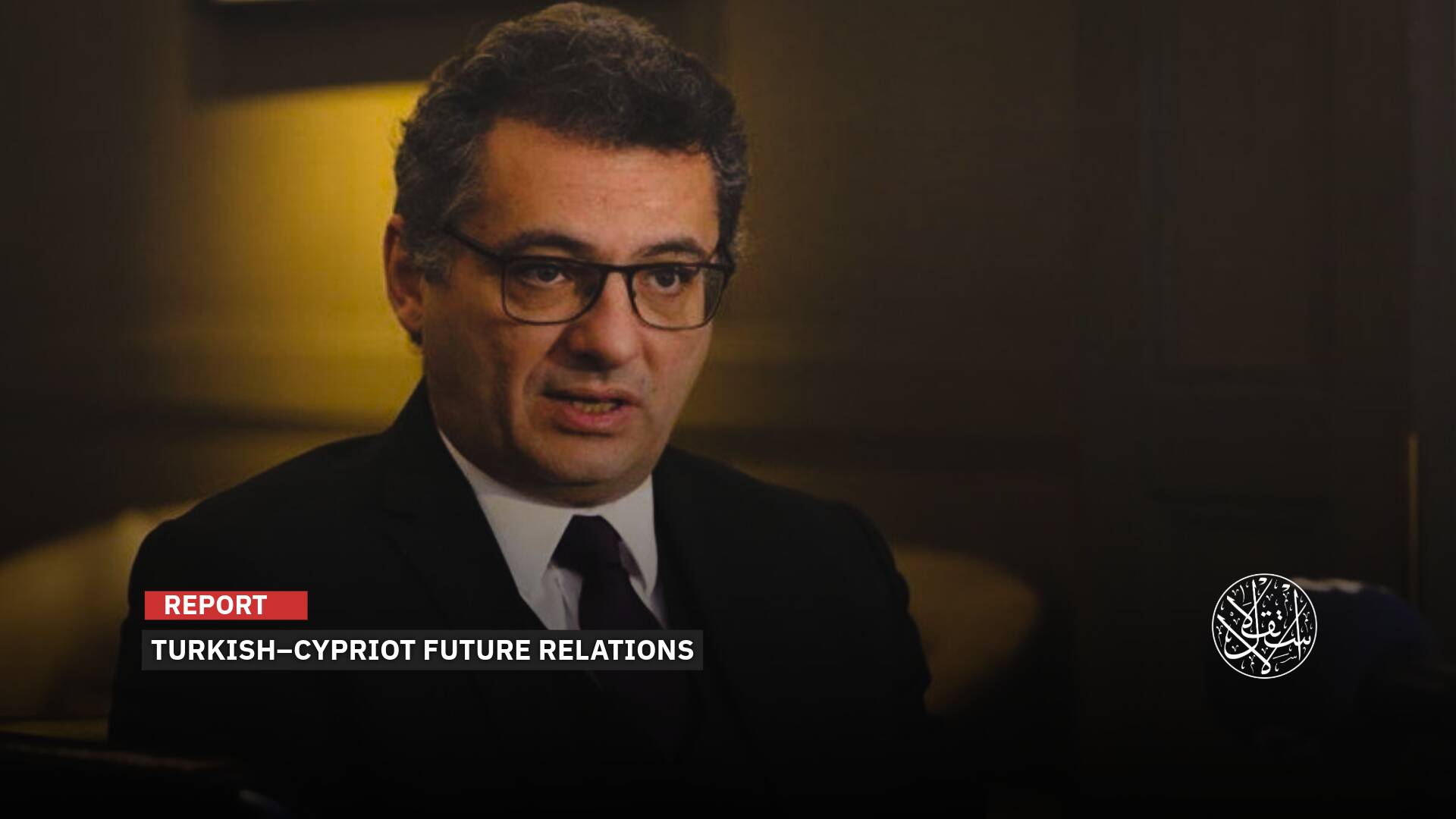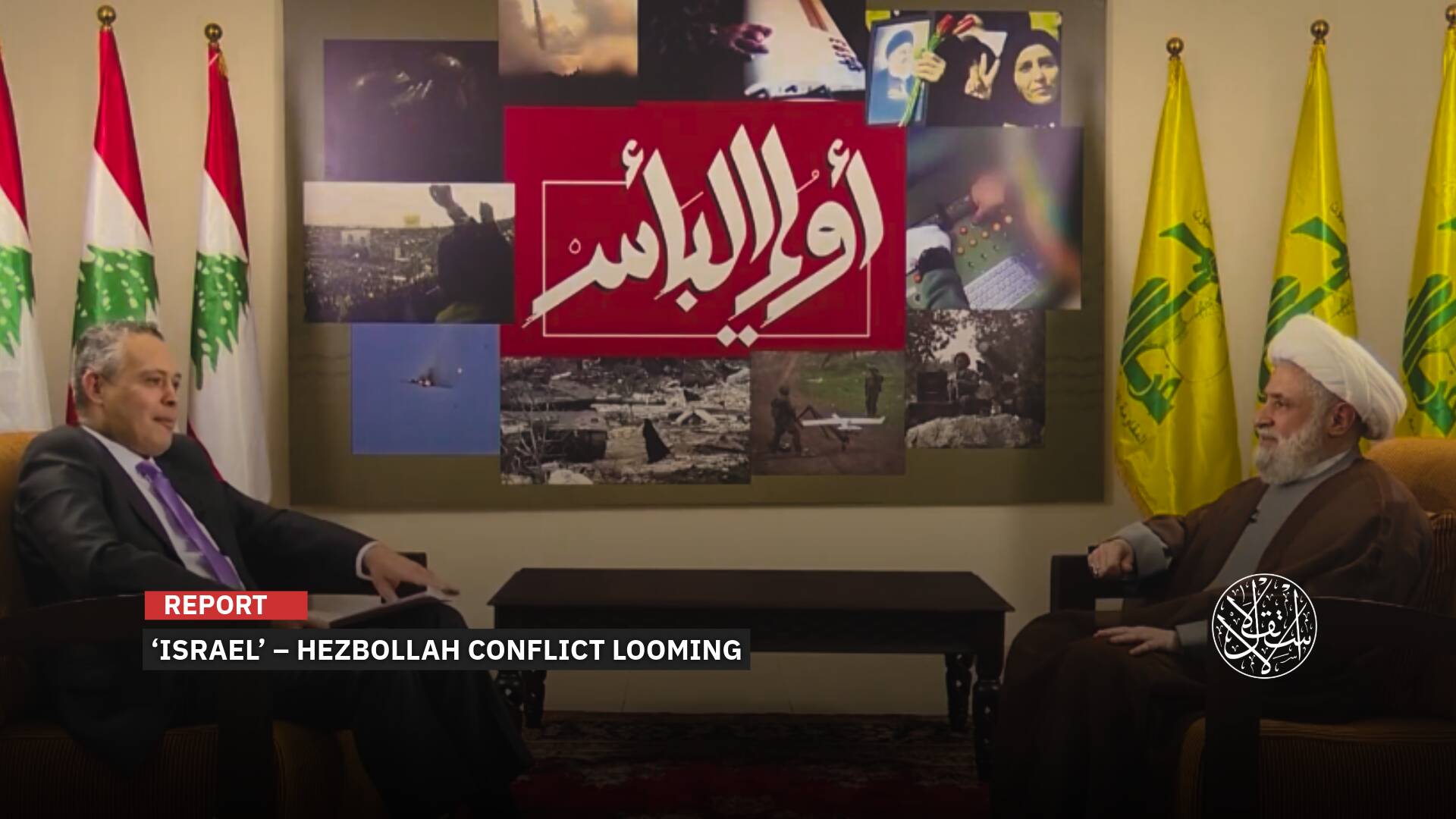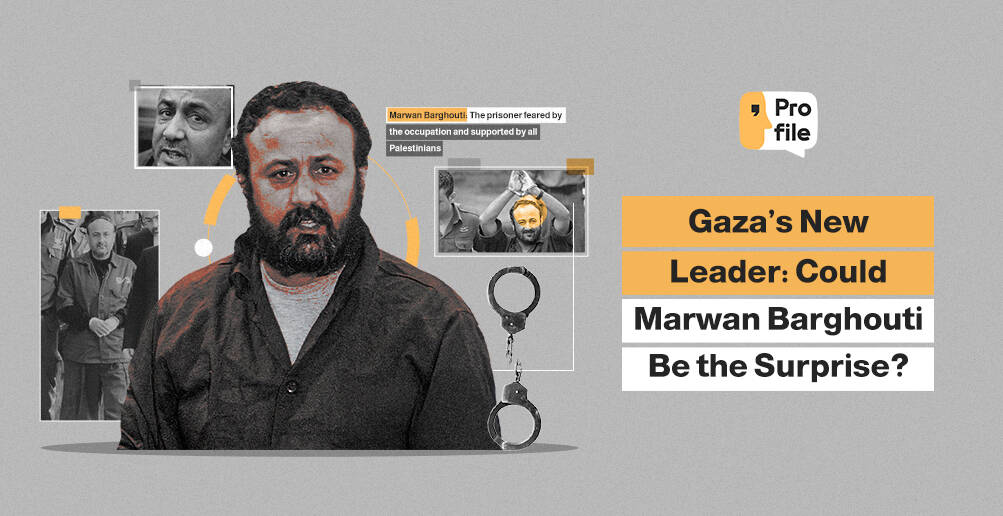‘Israel’s’ New Hasbara War: Replacing Bombs with Posts to Excuse Gaza Massacres
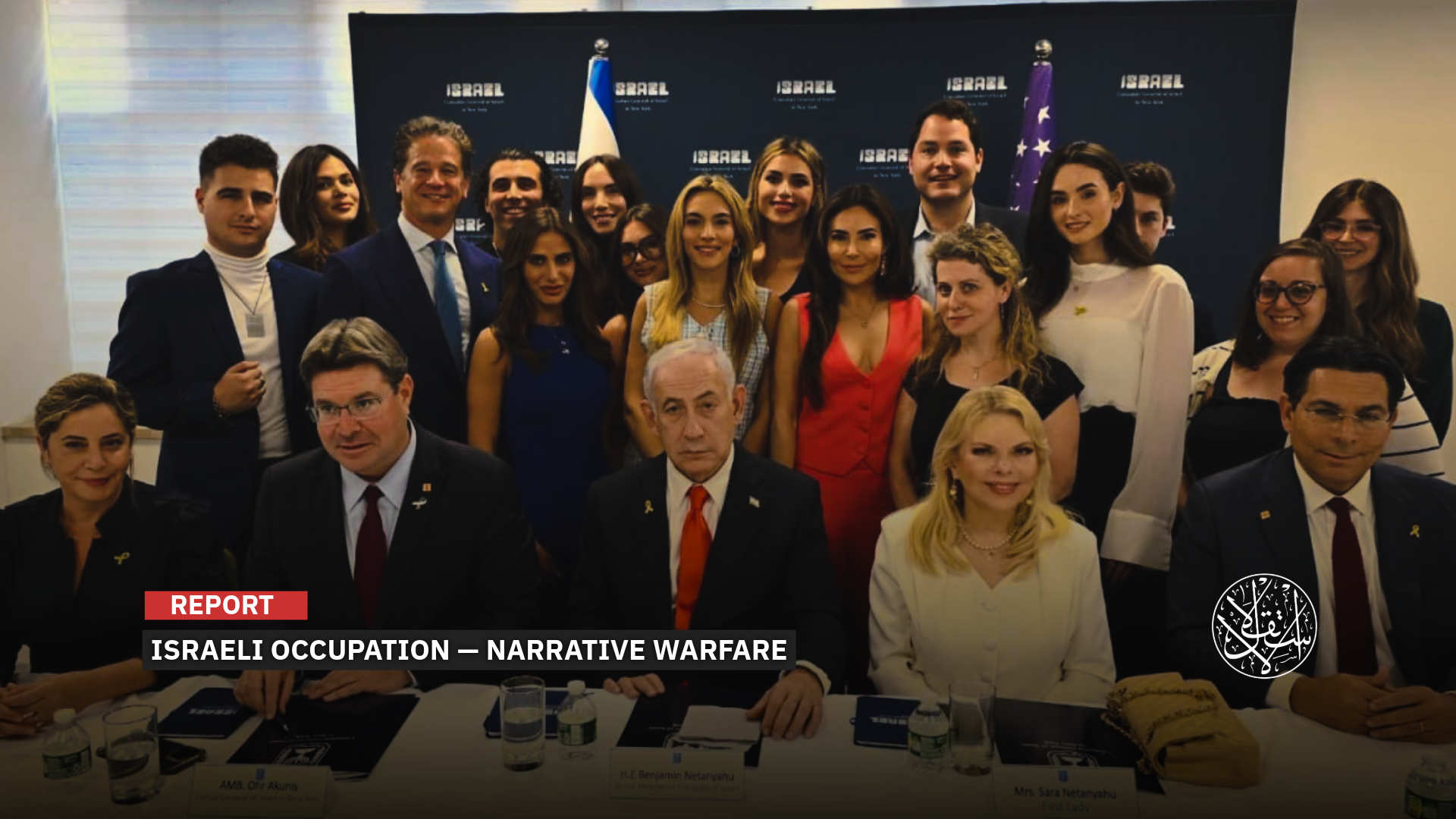
In many cases, a single influencer was paid around $7,000 for just one post.
What was meant to be a quiet and private meeting between Israeli Prime Minister Benjamin Netanyahu and 18 pro-Israeli Occupation influencers in New York on September 26, 2025, turned into a revealing glimpse of what happens behind the scenes.
Behind the photo opportunities and polished speeches, a coordinated campaign was unfolding in a new kind of narrative war, where hashtags and sponsored posts replace bombs and military briefings, and influencers become instruments in psychological operations meant to blunt the impact of images showing starving children and destroyed homes in the besieged Gaza Strip.
Netanyahu stated it plainly during the meeting, “Weapons change over time. We can’t fight today with swords or with cavalry, we have these new things - drones - I won’t get into that. But we have to fight with weapons that apply to the battlefield in which we’re engaged - and the most important one is social media.”
“We have to fight back. How do we fight back? Our influencers. I think you should also talk to them if you have a chance, to that community, they are very important.”
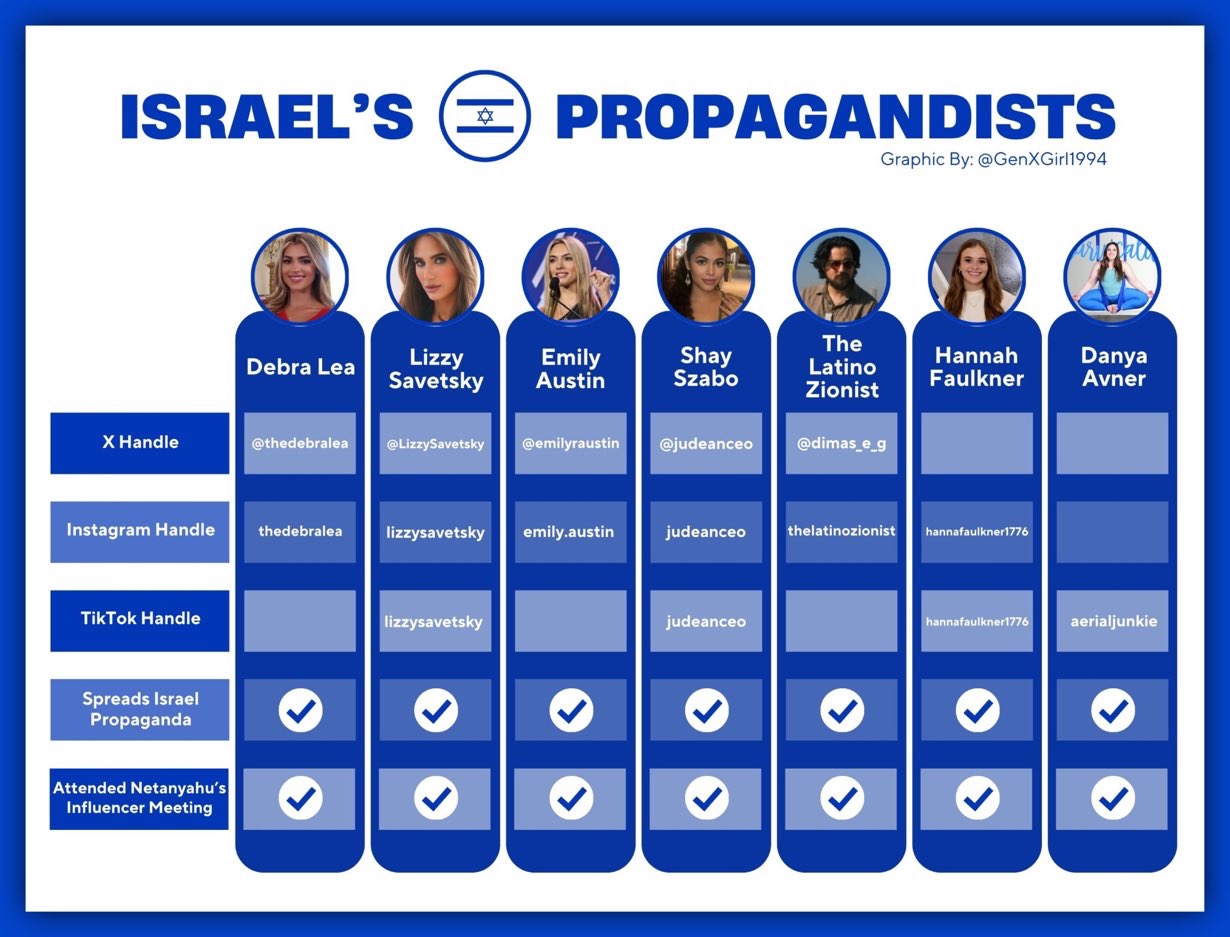
From ‘Esther’ to “Clock Tower”
Documents filed with the U.S. Department of Justice under the Foreign Agents Registration Act (FARA) reveal clear and unambiguous details.
The Israeli Occupation government contracted an American firm called Bridges Partners LLC to manage a network of influencers under a coded name: Project Esther.
Among these influencers is Lizzy Savetsky, a fashion and lifestyle blogger. In February, she shared a video of Jewish supremacist Rabbi Meir Kahane, a violent fanatic who routinely espoused anti-Arab and Palestinian rhetoric. In a caption to one of her social media posts, Savetsky writes, “The only language Arabs understand is force and fear,” paraphrasing Kahane.
There are also Miriam Ezagui, a U.S.-based nurse who posts on TikTok about Jewish Orthodox life and traditions, and Zach Fox, a video creator known for his unwavering support of the Israeli Occupation.
Yair Netanyahu, the Israeli Prime Minister’s son, who has been at the center of several social media scandals in recent years, was among the influencers. Most recently, he denied that there was a famine in Gaza, blaming images of starving children on genetic issues.
All of them are part of a powerful propaganda machine that pours vast financial, technical, and media resources into a battle for hearts and minds, an orchestrated effort to soften the global backlash against “Israel’s” collapsing image amid mounting accusations of genocide and war crimes in Gaza.
The company claims its goal is to promote cultural exchange between the United States and the Israeli Occupation, but the contract language speaks more clearly than the polished mission statements.
The deal allocates payments of up to 900,000 dollars over several months to cover production costs, influencer fees, content development, and agency expenses.
And that’s not all. Cross-referenced reports based on these disclosures indicate that some influencers received around 7,000 dollars for each post across multiple platforms.
These figures point to a structured system of buying reach and influence, exposing the false authenticity of supposedly “organic” messages delivered through seemingly independent voices bound by contracts and explicit terms.
Generation Z
In parallel, the Israeli Occupation government signed a contract with a firm called Clock Tower X to develop content targeting Generation Z, build digital platforms, and feed artificial intelligence systems with information designed to frame “contentious issues”—especially Palestine—in line with the official narrative.
This means the campaign is not limited to influencers alone but extends into the very algorithms and AI systems that shape the daily awareness of hundreds of millions.
In the background, “Israel’s” public diplomacy apparatus invests vast sums of money, with annual government funding packages reaching hundreds of millions of shekels, including about 545 million shekels (150 million dollars) in 2025 dedicated to expanding influence tools and messaging capacity.
All this points to a deliberate government strategy—not spontaneous activity—by an administration implicated in war crimes and using private firms, digital platforms, and algorithms for purely propagandistic purposes.
Within this structure, a special operations hub on X plays a central role, raising the question: what do messages look like when money drives them?
On X, the answer is clear. “Israel’s” Ministry of Diaspora Affairs grants selected influencers privileged access to locations off-limits to foreign journalists, such as aid distribution centers inside or near Gaza, to film videos showing scenes of abundance.
Then comes the prepackaged message: that food is plentiful and the real problem lies with the United Nations or Hamas, which allegedly fail to distribute it.
One of the most prominent voices spreading this claim was the American pro-”Israel” activist Xavier DuRousseau, who posted, “There is enough food at this aid base to feed EVERY person in Gaza for at least a week, but the UN, Hamas, etc refuse to distribute the food efficiently.”
“Instead, it sits here to spoil and be stolen. How is that Israel’s fault?”
This type of messaging flips reality on its head, blaming Palestinians for their own hunger while ignoring the suffocating blockade, daily bombardment, and systematic destruction of infrastructure and basic means of survival.
At the same time, other narratives gain traction, denying the existence of famine, accusing pro-Palestine protests of supporting terrorism, mocking starving children, and offering false explanations for their haunting images, all while portraying Netanyahu as a historic leader.
These are not random missteps but part of a coordinated communication pattern recycled across hundreds of accounts, some earning thousands of dollars, others funded through campaigns branded as cultural exchange or efforts to combat antisemitism.
The result is a flood of content that appears spontaneous but is in fact driven by official contracts, public money, and carefully designed strategic plans.

Hasbara
Netanyahu’s meeting with influencers is part of a long-standing strategy known as Hasbara, a Hebrew term meaning “explanation” or “justification.” It refers to Israeli Occupation’s propaganda efforts aimed at defending its aggressive policies and improving its global image.
This policy began in the early 20th century and later became a central tool in “Israel’s” public diplomacy, backed by direct state funding and pro-”Israel” lobbying groups. Its goal has been to discredit solidarity movements with Palestinians and promote “Israel’s” narrative across media, academia, and digital platforms.
According to the Israeli Occupation magazine +972, Netanyahu recently revived the Ministry of Hasbara, which had briefly existed in the 1960s and 1970s, establishing a national headquarters for it inside his office to coordinate official propaganda efforts.
A Shocking Shift
The New York Times revealed in a poll published on September 29, 2025, an unprecedented shift in American public opinion toward the Palestinian cause.
“Disapproval of the war [on Gaza] appears to have prompted a striking reassessment by American voters of their broader sympathies in the decades-old conflict in the region, with slightly more voters siding with Palestinians over Israelis for the first time since The Times began asking voters about their sympathies in 1998.”
According to the survey, 35 percent of Americans now side with Palestinians compared to 34 percent with the Israeli Occupation, a dramatic reversal from two years earlier when 47 percent supported “Israel” and only 20 percent supported Palestinians after Operation al-Aqsa Flood.
Nearly six in ten voters believed the Israeli Occupation should have ended its war on Gaza, even if Hamas was not defeated or the remaining Israeli captives were not freed. Meanwhile, 40 percent of respondents thought "Israel" was deliberately targeting civilians in Gaza, almost twice the proportion who held that view in a 2023 survey for the same magazine.
Austin Mugleston, a Democrat from Blackfoot, Idaho, said his views on U.S. support for the Israeli Occupation had weakened as the war dragged on.
“I actually was pretty pro-Israel the last few years, especially hearing about the devastating terrorist night of October 7,” said Mugleston, 33, who works in communications.
“Nobody should go through that. But for how long it’s taking and from how much worse Israel is doing to Palestinians, it just doesn’t feel like a level playing field anymore,” he told the New York Times.
To counter this decline in support, particularly among right-wing evangelical followers of the MAGA movement, Tel Aviv organized a special trip for 15 American evangelical influencers through the organization Israel365, which says its mission is to strengthen “Israel” by building bridges between Jews and Christians.
Documents from Israel’s Ministry of Foreign Affairs, published by Axios on August 14, 2025, show that the Israel365 Charity received a $70,000 contract to arrange the influencers’ visit as part of “Israel’s” public relations efforts in the United States.
Several of these influencers appeared in videos with Netanyahu, discussing the impact of the assassination of far-right evangelical preacher Charlie Kirk on the decline of evangelical support for the Israeli Occupation—reflecting Tel Aviv’s growing concern over the erosion of its base within America’s religious right.
Netanyahu himself admitted on August 10, 2025, that “Israel” is losing the propaganda war online because of the algorithms, calling this domain a new battlefield.
Reports indicate that the group of influencers involved, known in American circles as the “Frat Boys,” has now become part of the Hasbara network, tasked with rebuilding grassroots support for the Israeli Occupation among young people and evangelicals in the United States.
Why Now?
Social Media Marketing Expert Muhammad Sami said that the collapse of “Israel’s” narrative in the face of on-the-ground realities has driven Tel Aviv to intensify its propaganda campaigns and pour major investments into digital influence, in a desperate attempt to halt the rapid shift in Western public opinion.
“This change in public sentiment is no longer a minor detail. After two years of genocide, blockade, and famine in Gaza, major polls have shown a record decline in sympathy for Israel, with large segments of the population in the United States and Europe leaning for the first time toward supporting the Palestinians,” he told Al-Estiklal.
“This shift has coincided with a growing wave of recognition of the State of Palestine by key capitals such as Paris, London, Rome, and Berlin; this has stripped the Israeli Occupation of ‘the moral margin’ it once relied on in the eyes of Western public opinion.”
The media expert pointed out that “Israel’s” most dangerous front is no longer in the skies over Gaza but on the small screens in Western hands, adding that losing the moral debate exposes the entire Zionist project.
“Israel’s propaganda strategy ranges from assassinating Palestinian journalists to prevent the truth from spreading to controlling the flow of information online and suppressing Palestinian content,” Sami added.
He explained that when Tel Aviv fails to counter the shocking images from Gaza, it resorts to flooding the digital space with waves of disinformation aimed at planting doubt and confusion in the minds of viewers.
“The Israeli Occupation is now waging one of the largest propaganda battles in modern history, combining paid influencers, directed media outlets, and trained artificial intelligence systems.”
“It is a war of narratives,” he said, “in which Israel tries to conceal a reality that can no longer be hidden, because the images of starving children and the ruins of Gaza are stronger than any government-sponsored post meant to polish its image.”
Sources
- Narrative warfare: Inside Israel's battle for influence on social media
- Israel paying US influencers to reverse negative public opinion: Report
- ‘Stunning Reversal’: New York Times Poll Finds US Support for Israel Has Plummeted
- Israel is paying influencers $7,000 per post
- These Billionaires Subsidize the Israeli Military Through a US Nonprofit




